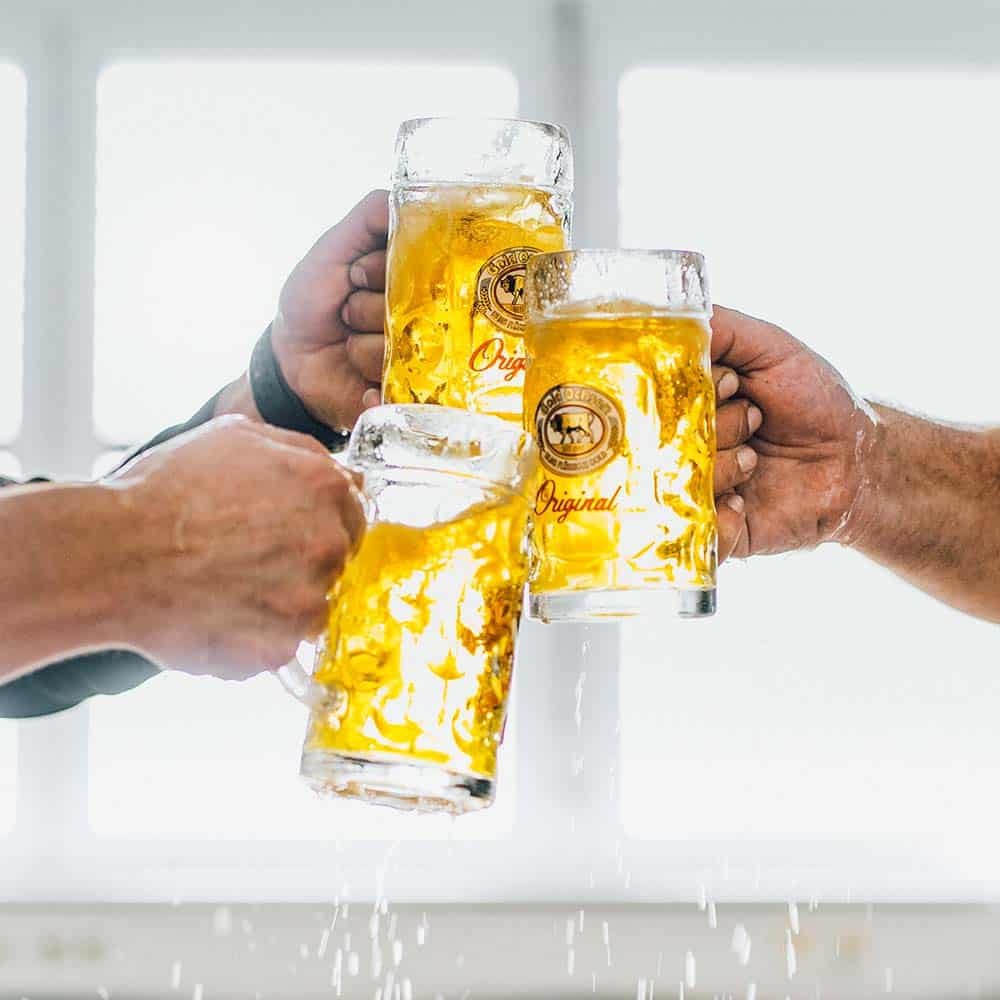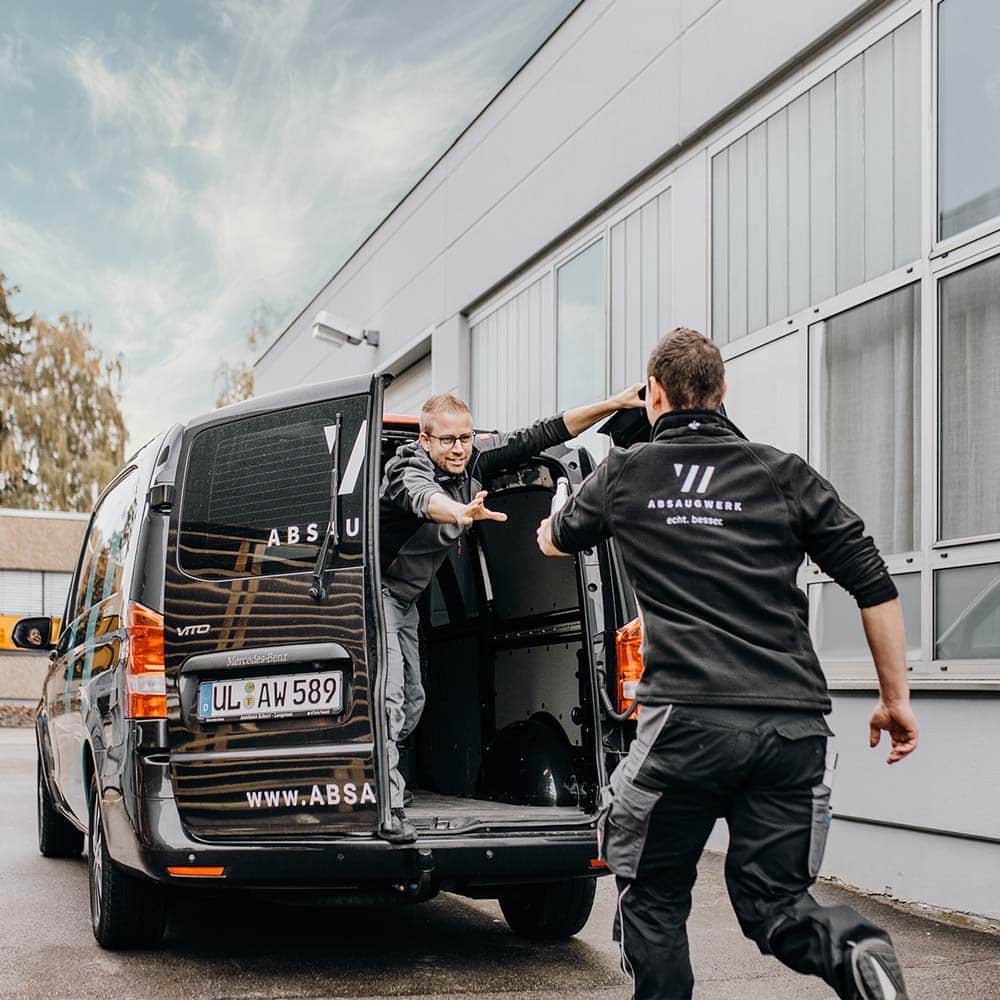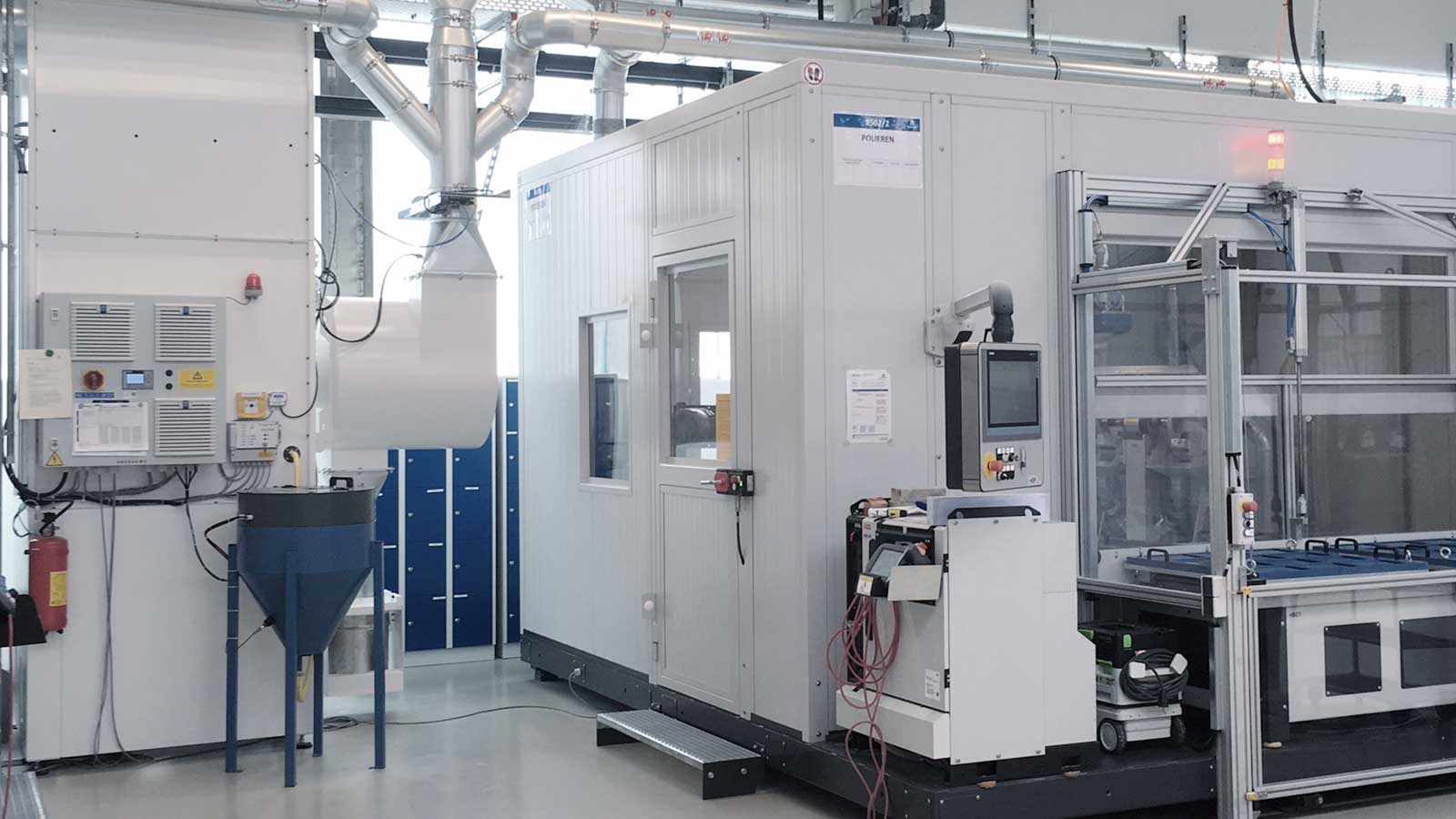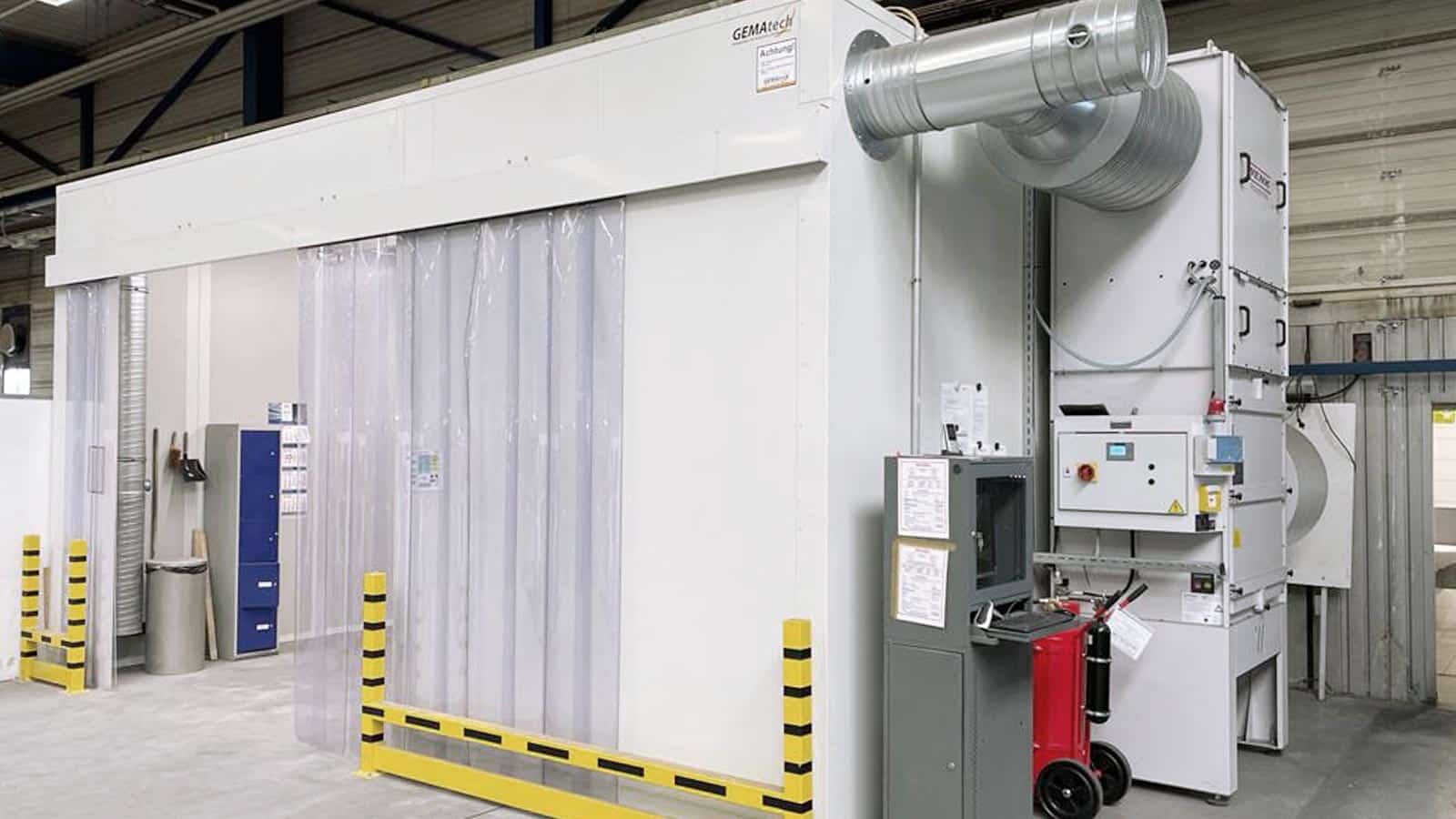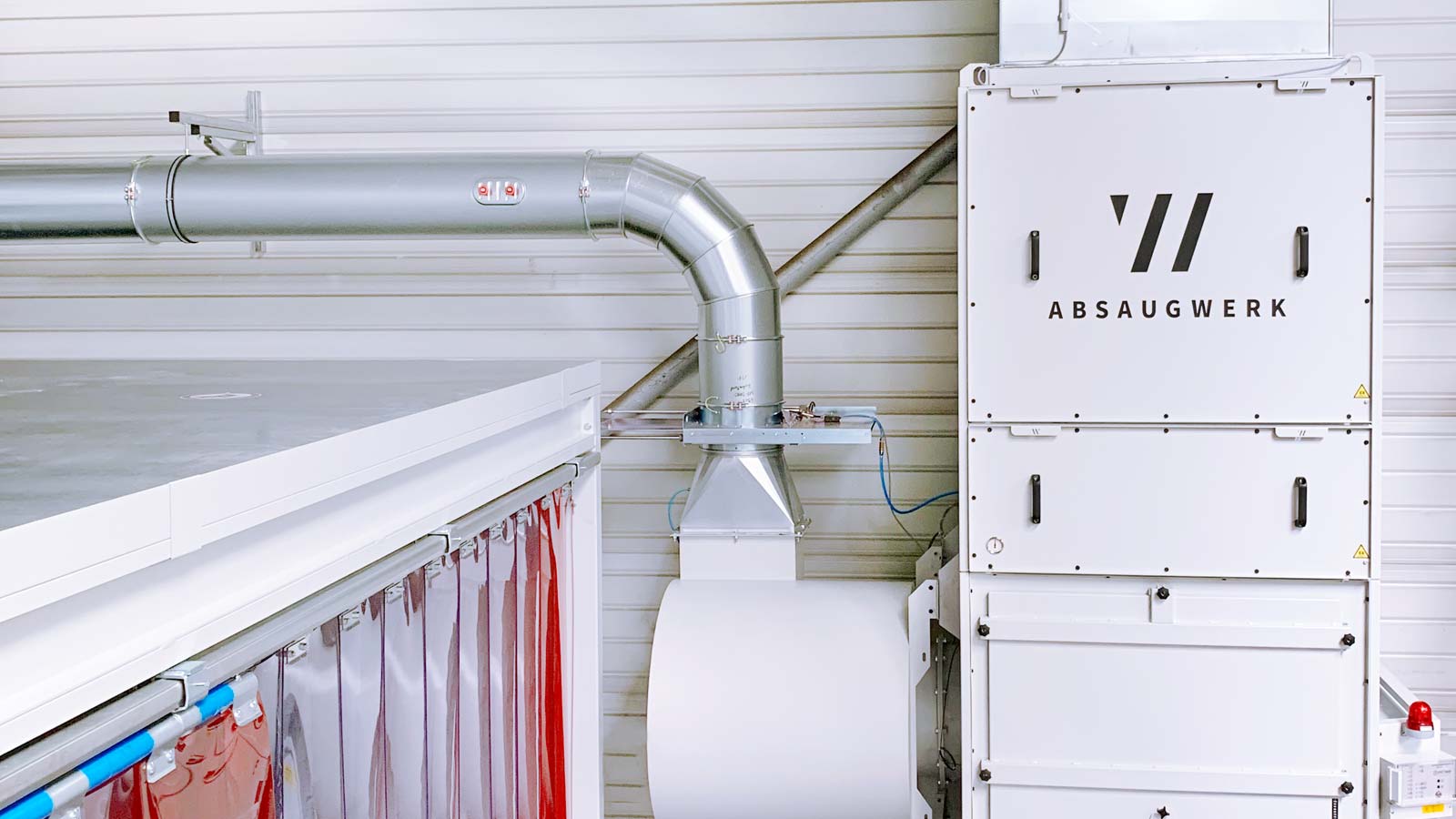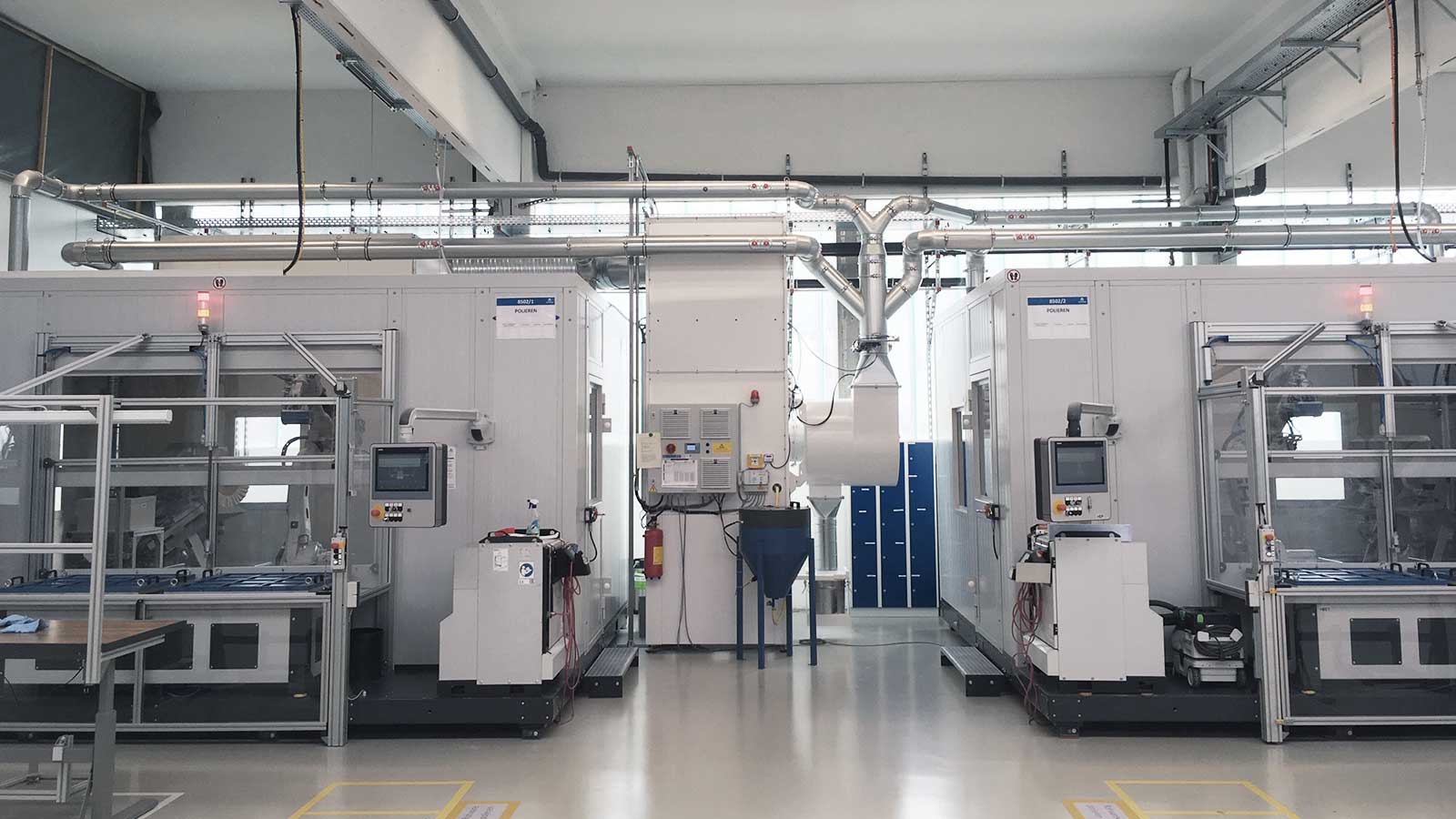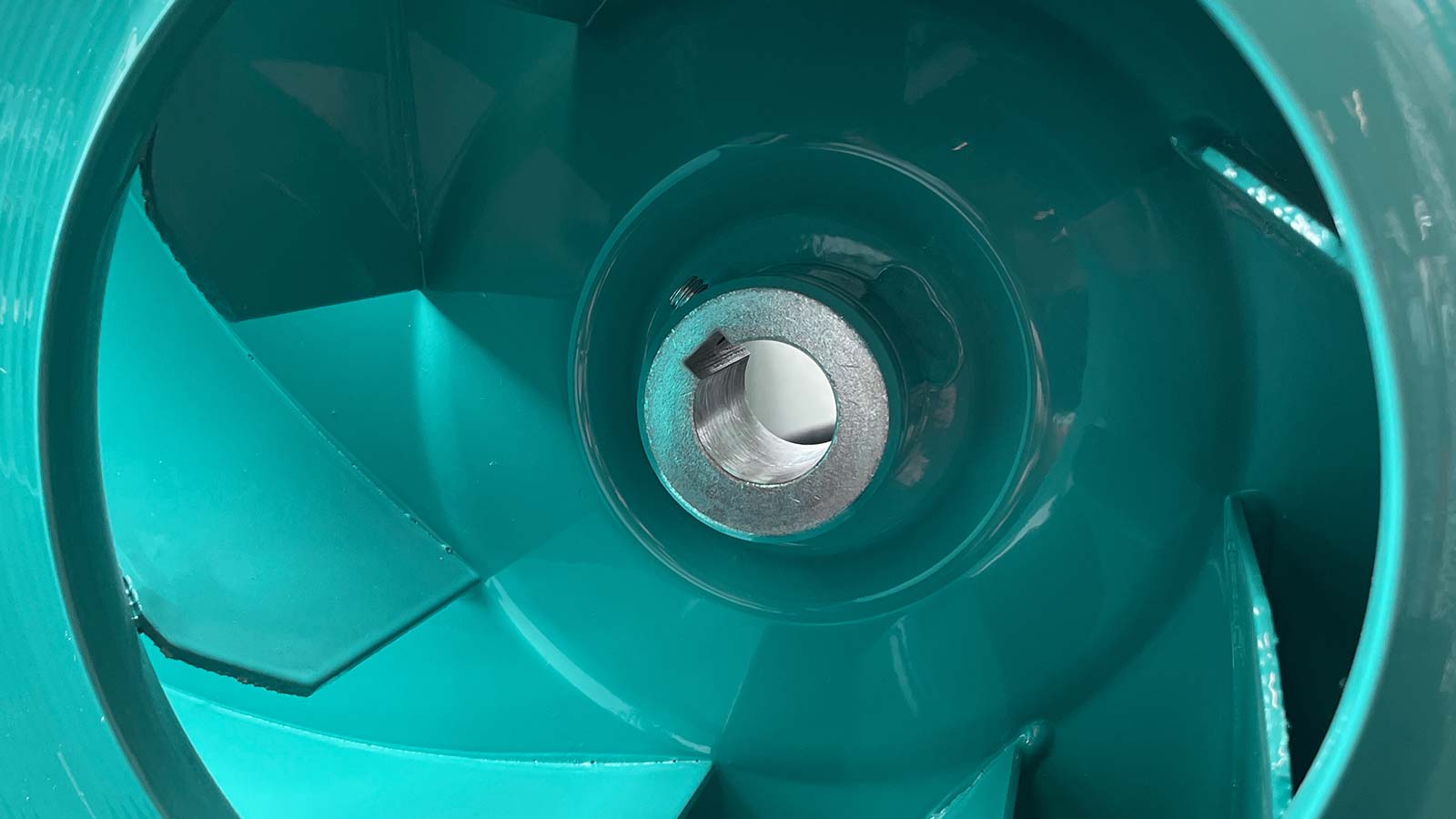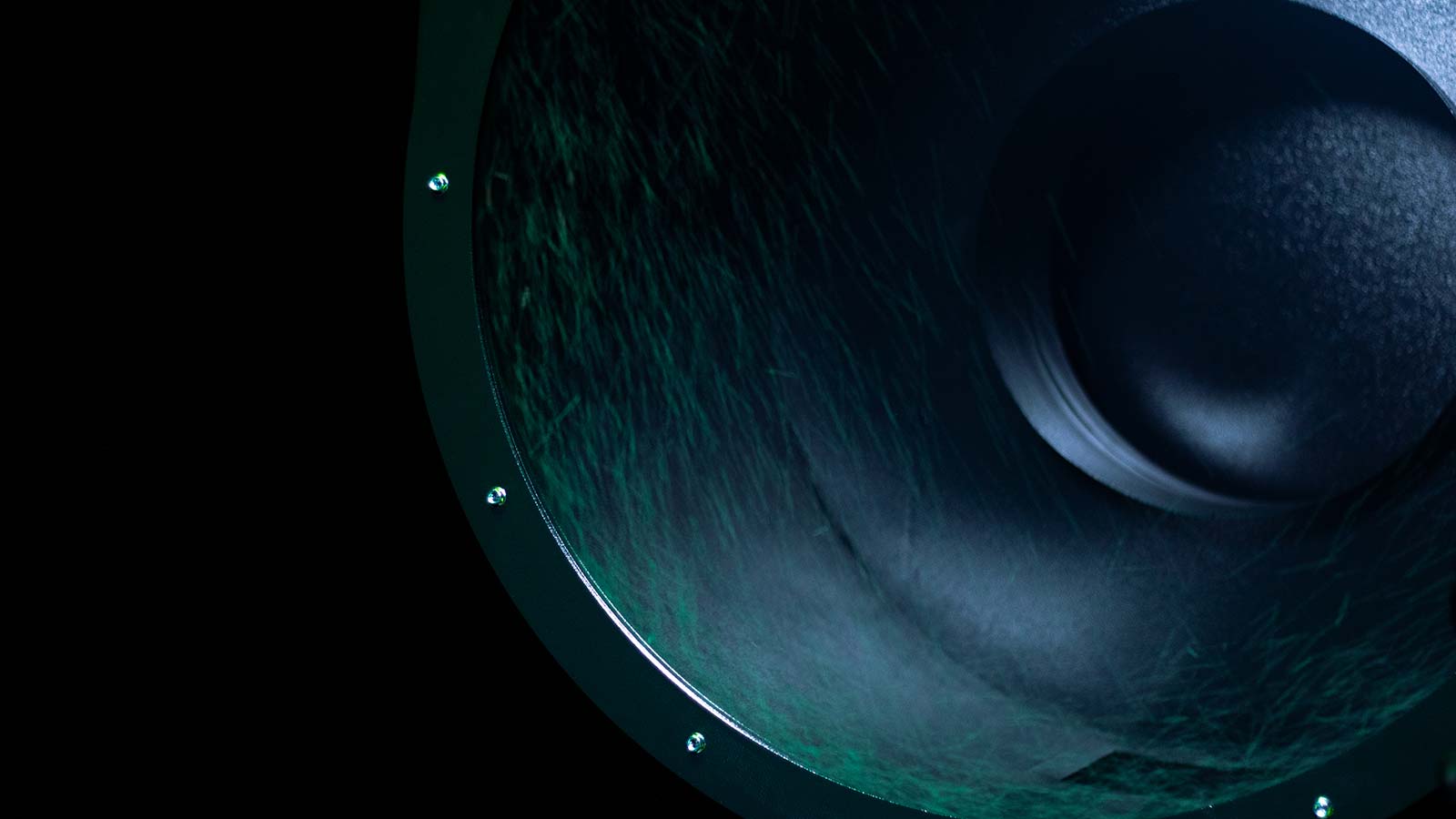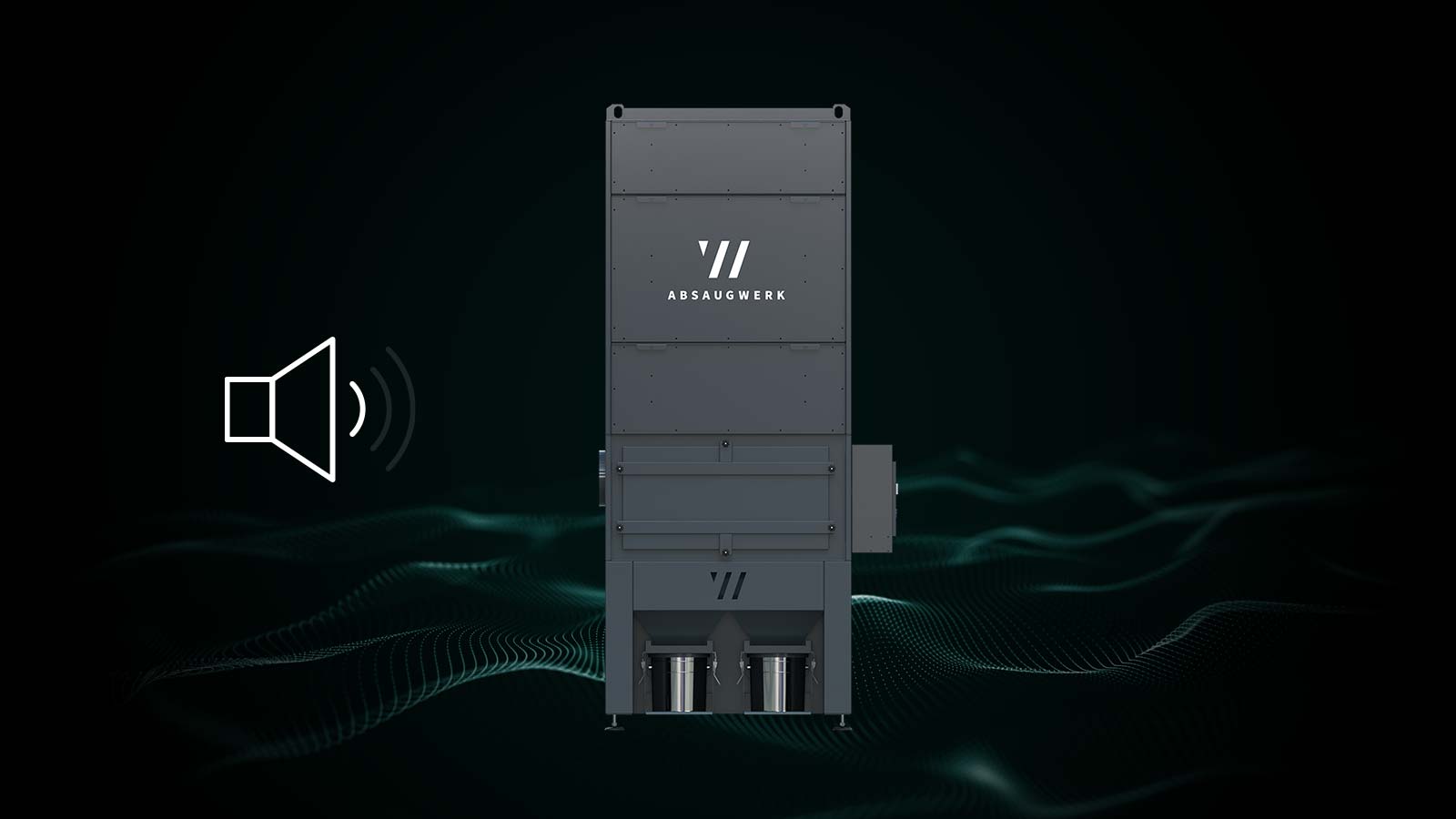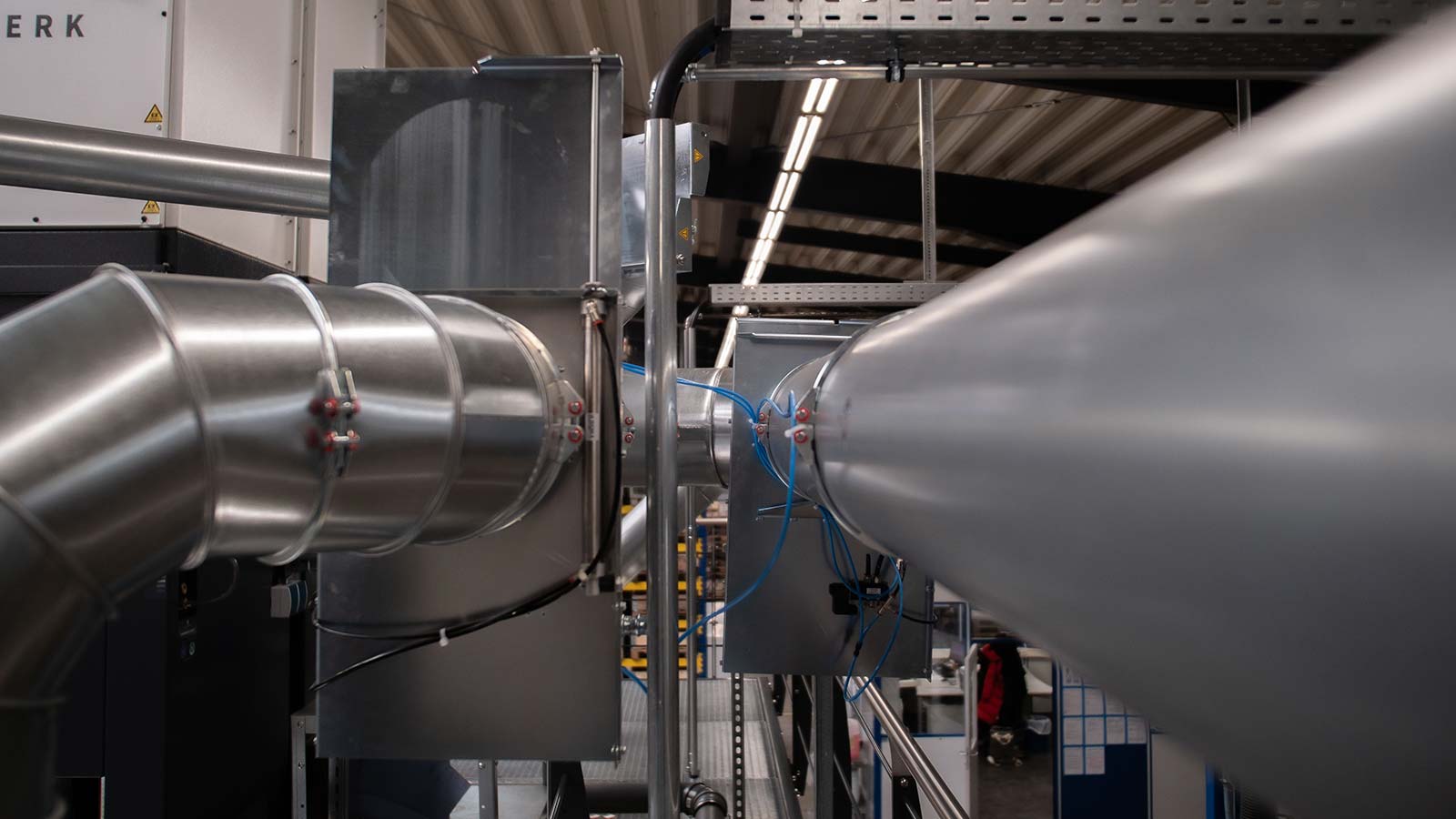
noise protection
for extraction systems and extraction cabins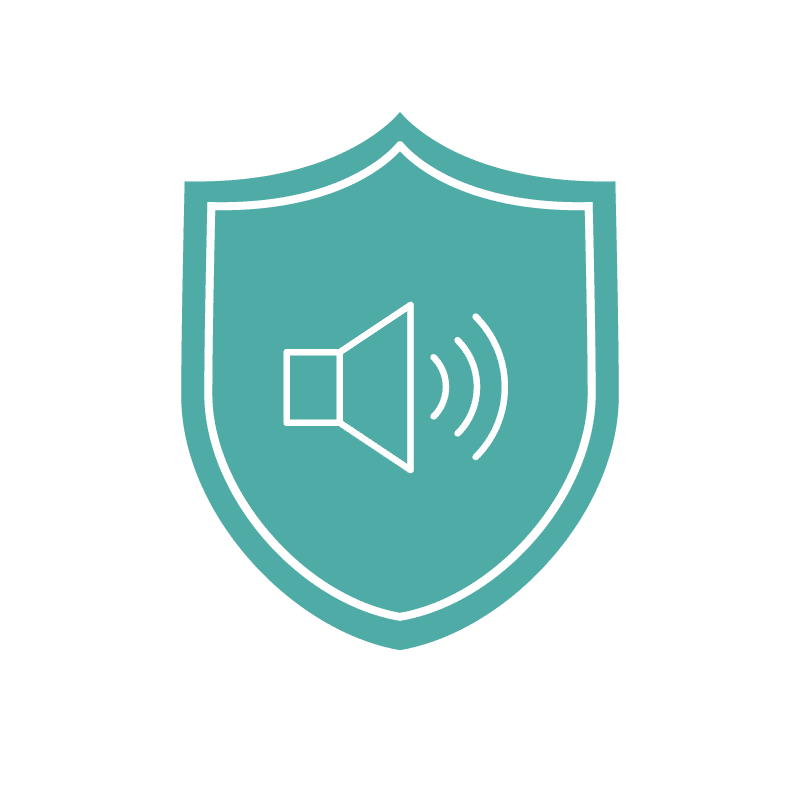
Noise protection in extraction technology
Noise protection in industry is crucial, as workplace noise endangers the health and performance of your employees. Long-term exposure to noise leads to hearing damage, stress and other health problems. Did you know that the most common occupational disease in Germany is noise-induced hearing loss? Companies are therefore required to comply with regulations such as the Workplace Ordinance, which demands low sound pressure levels in order to minimize health risks.
Decibel dynamics: benchmark for volume and health
Dezibel ist eine logarithmische Maßeinheit, die zur Messung von Schall verwendet wird. Die Beziehung zur wahrgenommenen Lautstärke ist nicht linear, sondern abhängig von der Empfindlichkeit des menschlichen Gehörs.
Auf der Dezibelskala beträgt der leiseste hörbare Ton 0 dB. Schon eine Erhöhung um 10 dB wird als Verdoppelung der Lautstärke wahrgenommen. Jeder weitere Anstieg um 10 dB entspricht einer exponentiellen Steigerung, beispielsweise bedeutet 20 dB einen Schall, der 100-mal stärker ist, und so weiter.
So ist inbesondere bei Absauganlagen oder Arbeitskabinen, aber auch bei anderen Maschinen, jeder Dezibel von Bedeutung. Selbst kleine Reduzierungen des Schalls können einen signifikanten Einfluss auf die wahrgenommene Lautstärke und die potenziellen gesundheitlichen Auswirkungen haben.
Der Schallpegel unserer Absauganlagen liegt zwischen ca. 68 und 79 dB, abhängig von Gerät und Leistungsgröße. Das entspricht in etwa der Lautstärke eines normalen bis lauten Gesprächs, einer Schreibmaschine oder eines vorbeifahrenden Autos. Der Geräuschpegel liegt im moderaten Bereich, wird im alltäglichen Umfeld als akzeptabel empfunden und verursacht keine unmittelbaren Gehörschäden. Durch zusätzliche Schallschutz-Techniken können wir noch niedrigere Schallpegel erreichen.
Noise protection measures for extraction systems and filter systems
There are various techniques for soundproofing extraction systems in order to minimize the noise level in production halls. It should be emphasized that the selection of suitable noise control measures depends on various factors, including the specific type of filter system (wet separator, deduster, oil mist separator), local regulations and the individual requirements of the workplace.
Extraction of several sanding booths with robots
Sound insulation
Use of sound-absorbing materials, such as special sound-insulating hoods or cabins.
Schalldämpfer
Integration von Schalldämpfern in den Abluftkanälen der Absauganlage und den Rohrleitungen.
Vibration damping
Use rubber mats or rubber pads to dampen vibrations.
Distancing
Spatial separation between the extraction unit and the work areas.
Maintenance & servicing
Regular maintenance for proper function and minimal noise development.
Quieter components
Use of quiet fans, motors and other extraction system components.
Schallschutz-Technik & Schallschutzkabinen
Der Einsatz moderner, leiser Absauganlagen sind entscheidend für die Einhaltung von Lärmgrenzwerten und tragen positiv zur Arbeitsumgebung, Gesundheit und zur Leistung des Unternehmens bei. Absaugkabinen spielen ebenfalls eine wichtige Rolle, indem sie nicht nur effektiv Schadstoffe absaugen, sondern auch Schallemissionen zuverlässig absorbieren. Beachten Sie, dass der Effekt des Schallschutzes auf Absauganlagen von verschiedenen Faktoren abhängt, aber in vielen Fällen zu einer insgesamt effizienteren Arbeitsumgebung beitragen kann.
Sound insulation components
- Stable and low-vibration construction
- Quiet, smooth-running fans
- Vibration damper
- Pre-separator for coarse material
- Optimized piping systems with a smooth inside, larger radii and smooth transitions
- Cyclical material discharge
- Intelligent SIEMENS LOGO! Control system
with day and night operation - Soundproof cabins
Limits & measures
The specified noise levels and action values are part of the statutory regulations on noise protection in the workplace. The measures required here depend on the noise exposure levels measured:
With a daily noise exposure level LEX, 8h of 80 dB(A) or a peak sound pressure level LpCpeak from 135 dB(C):
- Information for employees
(when the action level is reached) - Provision of hearing protection
(if the exposure action value is exceeded) - Offer of occupational health care
(if the exposure action value is exceeded)
With a daily noise exposure level LEX, 8h of 80 dB(A) or a peak sound pressure level LpCpeak from 135 dB(C):
- Information for employees
(when the action level is reached) - Provision of hearing protection
(if the exposure action value is exceeded) - Offer of occupational health care
(if the exposure action value is exceeded)
Legal requirements
Various regulations and directives govern noise protection in the workplace, including the German Noise and Vibration Occupational Healthand Safety Ordinance (LärmVibrationsArbSchV), which sets limit values and prescribes noise reduction measures.
EU Directive 2003/10/EC also lays down minimum requirements for occupational noise protection .
Workplace regulations, as in Germany, emphasize the responsibility of employers to minimize sound pressure levels through measures such as hearing protection, optimization of work processes and soundproofed rooms. In Germany, these guidelines can be found in the Technical Rules for Workplaces ASR A3.7.
